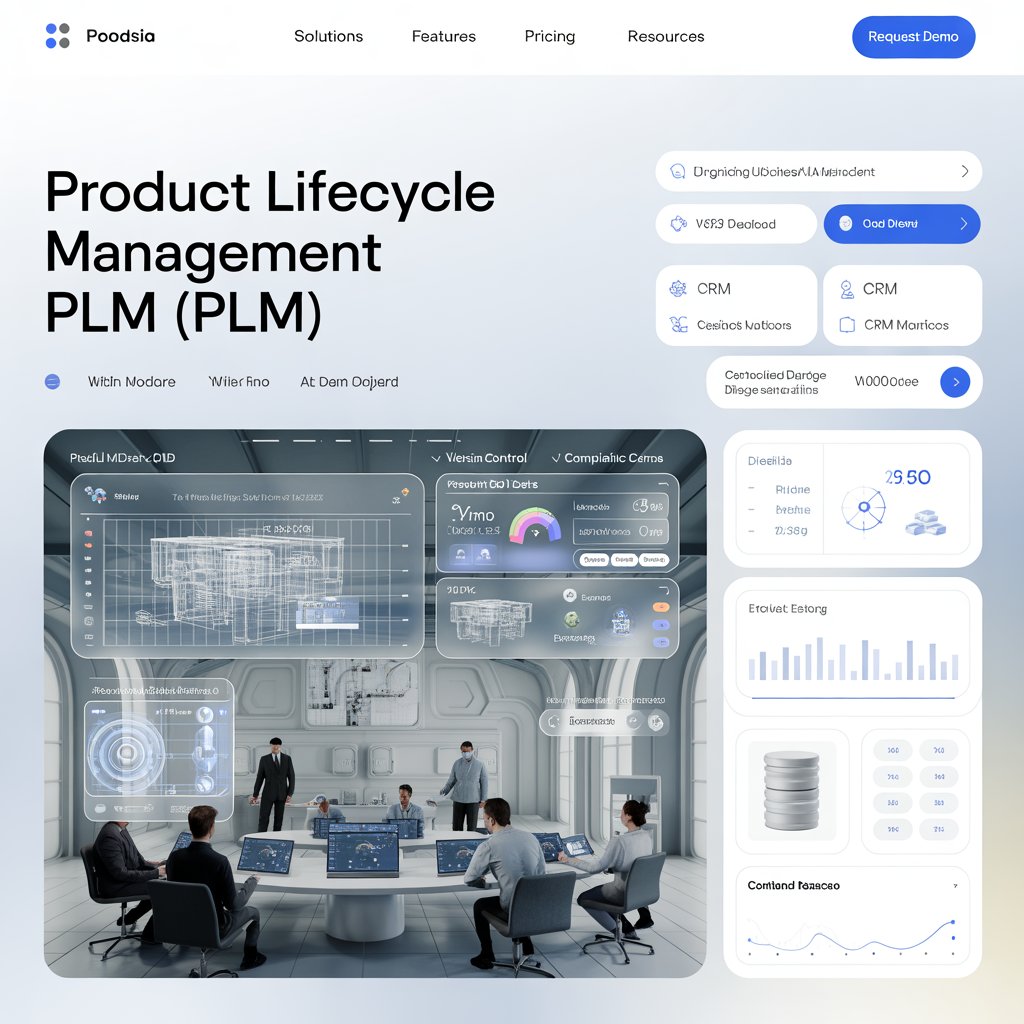Product development is an intricate process that requires precision, innovation, and collaboration across multiple departments. Whether you’re a small startup or a global enterprise, maintaining smooth workflows and a consistent development process is essential to stay ahead in the market. One of the key ways to enhance efficiency and streamline product development is through the use of a PLM tool.
This article explores how it can drastically improve your product development process, making it more efficient, cost-effective, and innovative.
Understanding the Role of PLM in Product Development
While creating a product, it’s easy to get bogged down by managing complex design processes, communication between teams, and keeping track of every change made to a product. That’s where a PLM tool comes in. It is designed to manage the entire lifecycle of a product, from concept and design to manufacturing and retirement.
With PLM tools, product teams can centralize all their data and collaborate in real time, ensuring that everyone is on the same page. This tool helps streamline various tasks such as documentation, product designs, changes, and revisions. Their correct utilization enables companies to shorten their product creation process and improve overall product quality and innovation.
The product development process benefits from this because it ensures every stage, from ideation to delivery, is mapped, managed, and optimized. Let’s explore how this is achieved in more detail.

Benefits of Using a PLM Tool in Product Development
1. Improved Collaboration Across Teams
Effective collaboration is key to successful product development. A PLM tool facilitates seamless communication across departments, ensuring that all teams—design, engineering, production, and marketing—are aligned on the same goals.
- Centralized Data: Everyone has access to the same up-to-date information.
- Real-Time Updates: Changes and updates are communicated instantly, reducing delays.
- Version Control: Each product revision is tracked, ensuring that there’s no confusion between team members.
In short, a product lifecycle management tool makes collaboration not only easier but also more efficient, allowing teams to work together to drive product innovation forward.
2. Accelerating the Product Development Cycle
The traditional product development cycle is often marked by inefficiencies, such as delays due to manual processes or lack of coordination between teams. A PLM tool enhances the product life cycle management by automating key processes and providing a single source of truth for all stakeholders.
- Streamlined Workflow: Automated workflows eliminate repetitive tasks, speeding up time to market.
- Reduced Errors: With better version control and tracking, the risk of human error is minimized.
- Faster Decision-Making: With all the information in one place, teams can make quicker, data-driven decisions.
These improvements to the product development cycle mean that companies can deliver products to market faster, giving them a competitive edge.
Up next, let’s explore the role of product management systems in managing product data and documentation.

3. Efficient Product Data and Documentation Management
Managing product data can be an overwhelming task without the right tools. A product life cycle management tool is specifically designed to handle this challenge by organizing product-related data in an efficient and accessible way.
Whether it’s CAD files, specifications, or bills of materials, PLM systems provide a structured environment where all product documentation is easily accessible.
- Single Database: All product information is stored in a centralized location.
- Search and Retrieval: Find the data you need in seconds using advanced search functionalities.
- Data Integrity: Ensure that the right version of data is always used, preventing costly errors.
Managing product documentation efficiently allows teams to spend less time searching for information and more time focused on innovation.
Now, let’s look at how PLM solutions provide robust control over the entire lifecycle of a product.
4. Full Lifecycle Management Control
From the very beginning of a product’s design to its eventual phase-out, PLM solutions give teams complete control over the product’s lifecycle.
With PLM software, manufacturers and developers can keep track of each phase of a product’s life, making it easier to manage resources, compliance, and upgrades.
- End-to-End Visibility: Track every phase of the product’s life cycle, including design, testing, production, and retirement.
- Compliance Management: Easily manage regulatory compliance for various industries.
- Maintenance and Upgrades: Ensure that products are regularly updated based on market feedback.
By utilizing a PLM tool, companies can ensure that every phase of the product lifecycle is efficiently managed, which helps reduce costs and prevent unnecessary delays.
Let’s now discuss how this tool integrates with other business functions to streamline the overall process.
5. Integration with Other Business Functions
Product development doesn’t happen in a vacuum. To truly streamline product development, it’s essential that a PLM tool integrate with other key business functions, such as supply chain management, customer relationship management (CRM), and enterprise resource planning (ERP).
- Supply Chain Integration: Manage supplier relationships and material costs effectively.
- CRM Integration: Use customer feedback to guide the development of future products.
- ERP Integration: Ensure production schedules are synchronized with inventory levels.
By enabling these integrations, PLM tools help create a cohesive ecosystem where all parts of the business are working together towards the same goal. This reduces inefficiencies and maximizes the potential for product innovation.
We’re now transitioning into a more technical perspective on how they can specifically benefit large enterprises.
6. Supporting Large-Scale Enterprises
For large companies like those implementing Siemens product lifecycle solutions, managing complex product development and data across multiple teams, geographies, and suppliers can be daunting. A powerful tool not only simplifies these tasks but also ensures scalability.
- Scalability: It can grow with your company, handling increasingly complex product lines.
- Cross-Department Collaboration: With global teams spread out across regions, PLM systems allow for seamless communication and collaboration.
- Security: Strong encryption and security features ensure that intellectual property remains protected.
Using PLM tools to scale up operations allows large companies to remain agile and responsive in a competitive market.
Adopting a PLM tool in your product development process is more than just a trend; it’s an investment in your company’s future. With its ability to streamline workflows, enhance collaboration, reduce errors, and accelerate the time to market, it is essential for any company looking to stay competitive in the market.
If you’re ready to revolutionize your product development process and unlock new levels of innovation, it’s time to integrate a product lifecycle management tool into your operations. Start today and experience the transformative impact it can have on your business.
Are you ready to streamline your product development process? Contact us today to learn how we can help you unlock new efficiencies and drive innovation in your organization.
